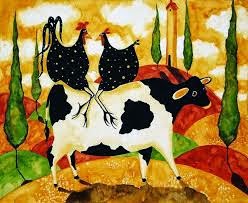 |
| Pinus Strobus |
"When Winter has locked up the soil and dispersed the birds and denuded the hardwoods of their leaves, one needs to be assured that things will one day grow again. At such a time a young pine, green above the snow, talks louder than many voices."
–"Pines Above the Snow," Aldo Leopold
The beauty of the high-country, so to speak, in the coulee area is that the landscape – geography, species and perspective – quickly changes from the low country. Here in the La Crosse area, we are geographically defined / blessed by the Mississippi River Valley, which offers us both the low-lying marshlands and the relatively high-flying bluff lands. For those who explore the high-country, we come to know a different, and dare say, less known pattern of rock and vegetation. Glaciated sandstone meets pines; white birches meet the blood red dash of a solo cardinal; hackberry the barbed wire farm fence set from previous generations.
The favorite of all, though, has got to be the naturally occurring pine trees that sprout up at the rooftops of limestone displaying a hardiness, a rawness, that quickly transports you from suburb to the realm of real forest.
There can be hardly a doubt that the allure of the pine is that it's imperfect angles tell a story of ancient survivability and beauty at once. To find oneself under the erratic dome of the pine stand, especially one that grows out of stone, is to find something, finally, peculiarly, purely natural.
One percent of old-growth white pine forests still stand in America. Wisconsin used to BE white pines. We eliminated those forests altogether through a period of lumbering history that might equal nothing short of a brief moment of earth time. White Pines nationwide are now a species on the extinction list and a hand full of scientists have to work full careers just to conjure enough resources to study them properly out west so to even get them on the proper list.
Expose yourself to the gnarled beauty of the pine, learn that its Native American symbolism – that it was considered, once, the peace tree, and eaten during periods of starvation for its abundance of vitamin C – and it doesn't take much effort to find yourself in awe of pinus strobus.







































